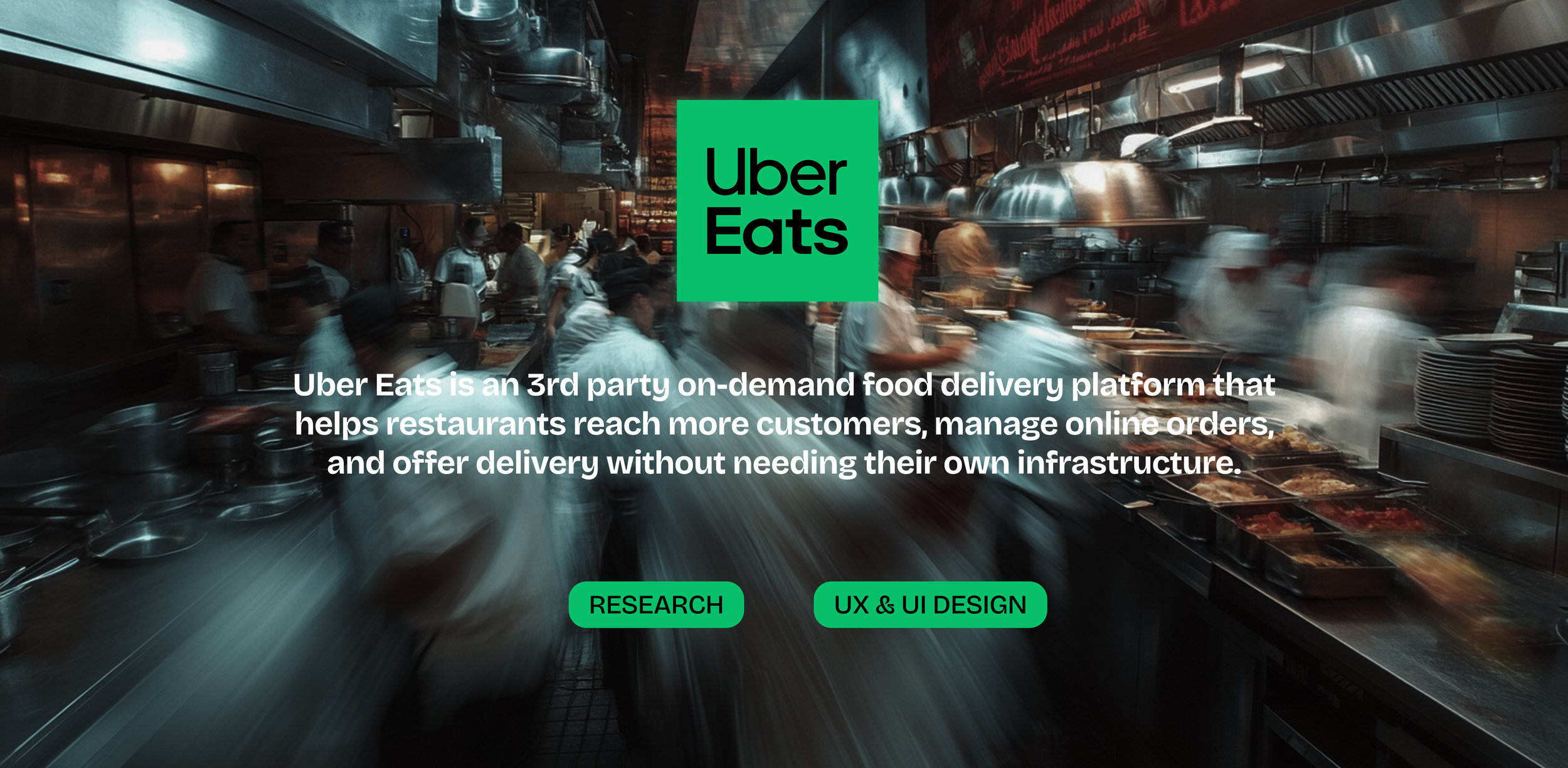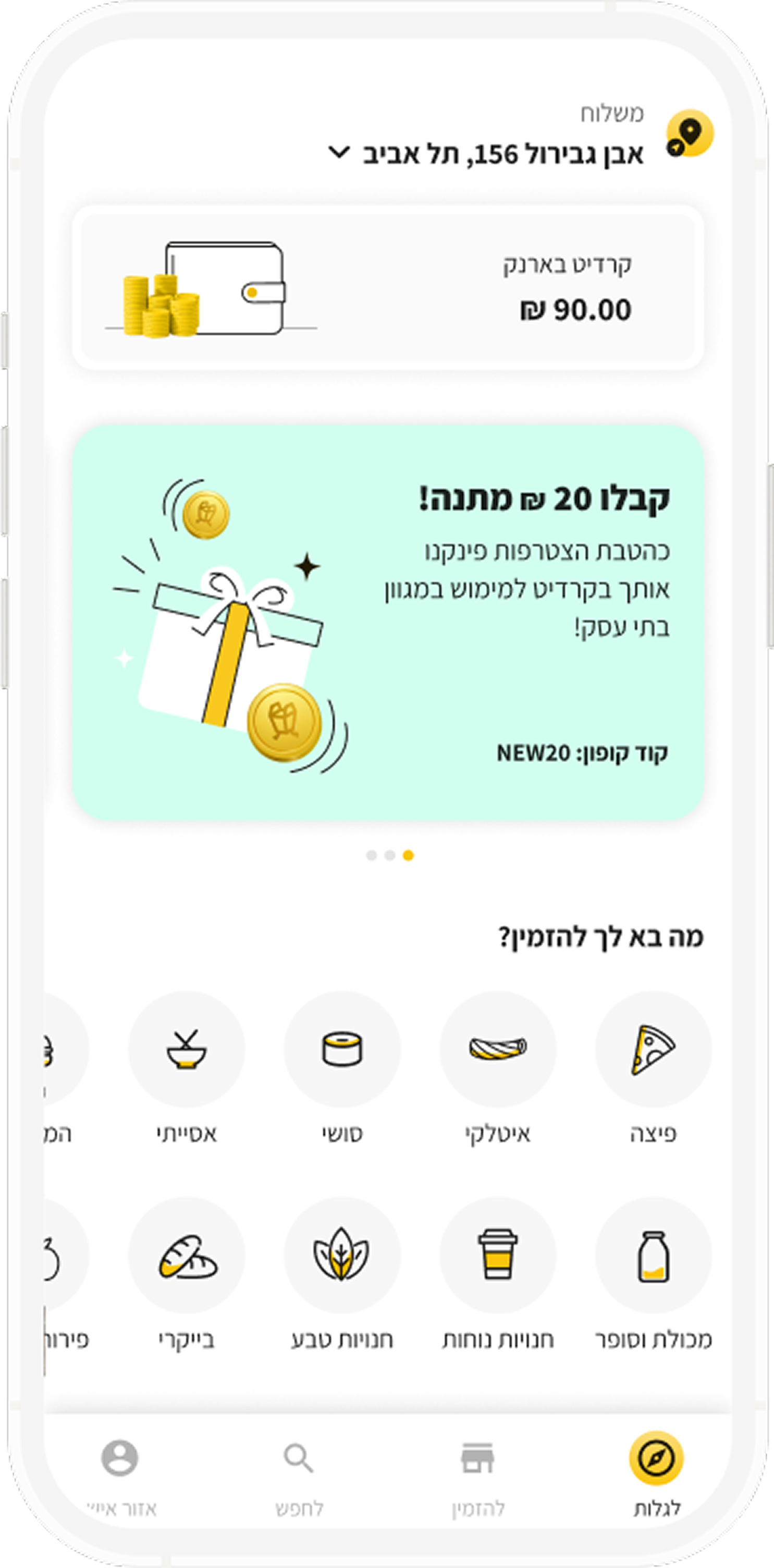Challenge
To manage peak-hour stress, many restaurants temporarily disable third-party delivery platforms - resulting in missed revenue, reduced visibility, and limited customer access.
Our goal was to minimize platform downtime by supporting smoother operations and sustained availability during high-demand periods.
Solution
A third restaurant status, Limit, was introduced alongside the existing Accept (on) and Pause (off) modes. This mode allows only the top 25% of loyal customers to place orders during peak hours, easing kitchen strain while maintaining operational continuity and app presence. The feature ensures restaurants stay discoverable and profitable, even when operating at limited capacity.
Impact
40%
In order errors
50%
In reliance
on Pause mode
5%
In revenue for restaurants and Uber Eats
Research
Semi-structured in-depth interviews were conducted to uncover the motivations, frustrations, and perspectives of restaurant staff. In parallel, on-site observations were carried out to better understand the real-world context, surfacing operational challenges and friction points within the restaurant environment.
Competitive Analysis
Online research was conducted to explore how other platforms manage delivery challenges during peak hours and minimize restaurant downtime. The goal was to identify effective strategies and tools that support operational efficiency and ensure service continuity.
Key Insights
$300M
lost annually from downtime.
75%
of sales come from repeat users.
70%
of errors occur at peak
User Flow
The mode-switch experience was streamlined, easing cognitive load and reducing manual interactions.
Current Flow
Friction points:
Mode toggle is hidden hard to find during peak stress, causing kitchen overload.
Manual switch to "Accept" mode introduced delays, resulting in potential revenue loss.
New Flow
Enhancing Usability:
Relocated mode toggle for quicker, one-tap access during high-stress moments.
Auto-reset timer was added to return to Accept mode and reduce cognitive load.
User Testing
Guerilla testing was conducted to uncover usability friction and improve feature intuitiveness.
While the flow demonstrated strong efficiency and a short learning curve, three key issues emerged:
First, the iconography for the "Limit" status lacked clear affordance, making it difficult for users to interpret its function.
Second, users were unaware that a timer needed to be set to activate the mode change, leading to confusion and incomplete configuration.
Based on these insights, targeted refinements were implemented to streamline the experience and reduce cognitive friction.
Initial Design
Refined Design
Design
A pill button was introduced for quick, intuitive access to the restaurant’s status controls.
A radio button was chosen over segmented control to support a more intuitive status selection flow, accommodating the need for a confirmation step before finalizing mode changes. To set time durations for Limit and Pause modes, a stepper input was used for clarity and ease. A live countdown timer was added to the status button in both Limit and Pause states, offering real-time feedback and reinforcing user awareness.







